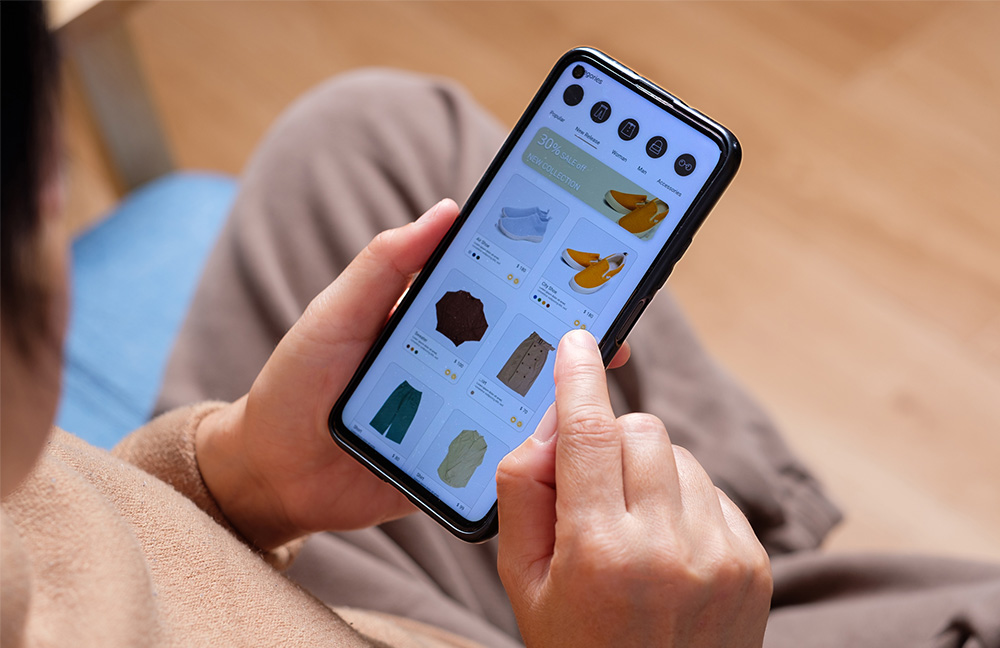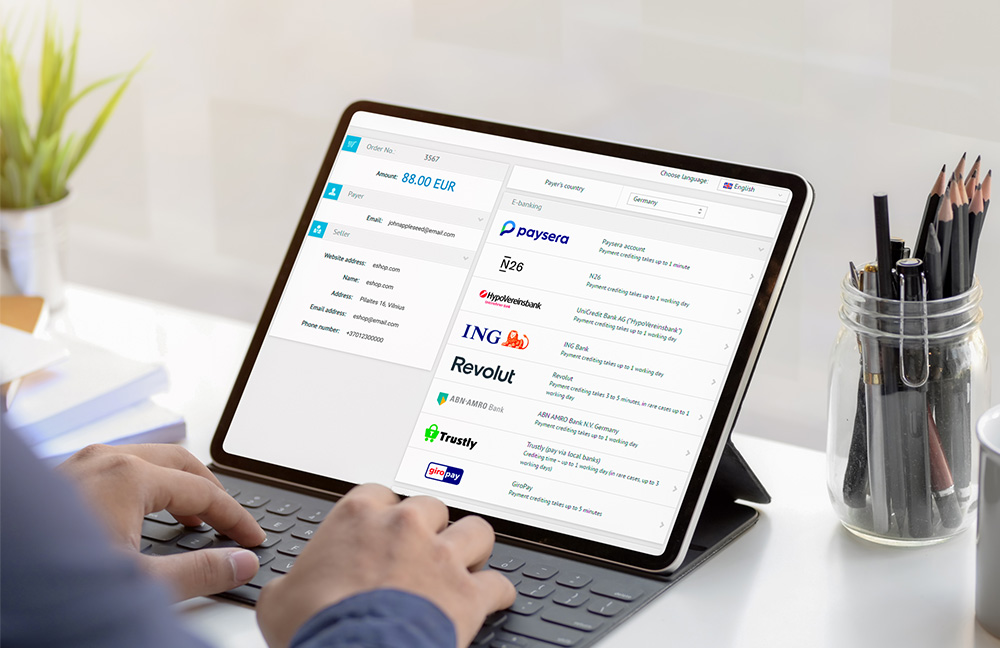How to build an online shop from scratch

The best part is that nowadays, you don’t have to hire a professional website designer. You don’t even need to be able to code, as website builders have easy-to-use tools that will help you create a professional-looking web store in no time.
Step 1: Conduct market research and prepare your offer
What will you sell?
What are you selling, and what makes it special? What features does it include? What makes it unique?
Even if It’s not a physical product that you aim to sell but a service, it’s still crucial to ask the same questions. For example, some therapists offer online sessions and people can order them through an online store.
In other words, emphasising the value of your offer is extremely important, regardless of its shape.
Who will you be selling to?
To answer this question, you need to know your audience. The following questions may be helpful to define your niche and its needs:
- What problem does your offer solve for your customers?
- What makes your offer better than similar ones or alternatives?
- What are the demographics of your target audience?
- Do they have disposable income and is it a profitable market?

Who are your competitors?
As strange as it sounds, there is a bright side to having competitors. If your competitors have had an online store longer than you do, you can look into which practices proved to be successful and which ones did not. In other words, learning from others can save you time and money.
What is your budget?
An online store is an investment, so you will need to include the costs and estimate if it will pay off.
The extent of your budget will depend on whether you intend to build and maintain the online store yourself, or if you’d rather outsource it to someone to help you.
At the very least, your costs will include your hosting and domain name. Security, plug-ins, and other additional features are optional and completely depend on your needs and goals.
Your shipping policy
Whether you plan to ship your products domestically or you intend to explore international waters too, not only do you need a clear strategy, but a transparent policy too.
Here’s what you should include:
- Shipping price
- Estimated arrival time
- Live tracking options
- Product return policy and conditions
Step 2: Pick a domain name
Your domain name is your online business address, as well as the name that makes you searchable online. And that is precisely the reason for you to come up with a short, memorable, and catchy name that reflects what you do. If you already have a business name, you’ll probably want to use the same one for your domain name.
Step 3: Choose the best platform for your online store
WooCommerce, Shopify, Wix, and Magento are just a few big names, but there are many others. So how does one choose?
Just going through them all and looking for the best platform can take hours, and there are a thousand other things to do when you’re running a business. Luckily, there’s a helpful and brief comparison of the best e-commerce platforms out there.
Just remember to define your company’s needs and goals first!
Step 4: Design your online store
When we talk about your online store’s design, we’re not just talking about visual aesthetics. Your website’s functionality plays a huge role in an enjoyable shopping experience for your customers, too.
Fortunately, a CMS (Content Management System) typically offers hundreds of templates, all made for and compatible with e-commerce. A template can be installed with just a few clicks, and then all you need to do is customise it for your brand. The foundation is laid out.
Here are a few things to remember when you customise the online store:
- Be consistent with branding (colours, fonts, logo)
- Make it mobile-friendly
- Focus on simplicity instead of complex features and structures
- Make sure that it loads fast
- Include customer testimonials
Step 5: Include product categories
Think of your online store as you’d think of a physical one.
Typically, physical stores organise products by displaying the same and related categories close to each other. All of this is done to accommodate customers and help them quickly find what they’re looking for.
The same principle applies to online stores. To make your web store easy and fun to navigate, you’ll want to categorise your products. This, by the way, also earns you bonus points for your Google ranking!
Step 6: Include product photos and descriptions
This is the part where you will want to compensate for customers not being able to see, touch, and try what you’re selling. To do that, you will need product photos and informative descriptions.
Important factors for effective product photos and descriptions:
- Capture different angles and features, ideally with people demonstrating the products
- Include strategic keywords in product titles and descriptions
- Include dimensions and other specifications

Step 7: Set up payment gateways
So, your customers just added your products to their cart, and now they’re ready to pay. Your hard work is paying off!
But let’s not relax too much just yet, having a smooth payment gateway is crucial, as it is the final step of the decision-making process.
To accommodate all buyers, you’ll likely want to include all major payment gateway options, such as direct bank transfer, credit and debit cards, and PayPal.
Step 8: Paysera checkout for payment gateways
If you’re not a tech person and building an online store is a time-sensitive task, we have a solution for you.
All of us at Paysera want to help you grow your business, and we love hearing success stories from our clients, which is why we created an online payment processing tool that comes as a free plugin and API. Rest assured, the Paysera checkout plugin and API are 100% integrable with all major trading platforms!
Currently, we are helping more than 13,000 online shops to create a smooth and quick payment experience. Here’s what you can expect from us:
- 24/7 support in English and 14 other languages
- Free consultations with our IT specialists
- Easy refund policy
- Currency conversion at a favourable rate
- Real-time visibility of your customer payments
- Optimising payments from different countries, currencies, and through various payment methods

Get the free Paysera plugin or API now!
Or try the demo version.
Step 9: Web hosting and SSL certificate
Remember how we talked about your domain name and how it’s basically your business address online?
Well, here's another metaphor for you: your web hosting is your office space.
Since your e-shop’s speed and functionality highly depend on your web hosting company, you’ll likely want to spend some time carefully researching different providers.
Additionally, an SSL certificate is another thing you’ll want to implement to prove that your website is secure. This is extremely important for online stores to earn a buyer’s trust and ensure them that their payment information is handled safely.
Step 10: SEO optimisation
As you already know, SEO optimisation can grow your online business by connecting you with people who search for your products and services.
We already mentioned page loading speed, SSL certificates, and mobile-friendliness as some of the factors that will make your online store appear higher in Google search results.
The other areas of SEO that we haven’t mentioned yet are the following:
- Keyword research
- Link building
- On-page SEO
- Technical SEO

Step 11: Test your website
Now you finally have your online store with beautiful product photos, witty descriptions, and clever SEO optimisation.
It’s testing time, and then you’re good to go.
We recommend testing the following:
- Performance: is it loading fast? Do the link redirects work? Is it easy to navigate?
- Mobile-friendliness: visit your online store using your smartphone and check its speed, as well as the state of the layout.
- Security: is your SSL certificate in place? What about CAPTCHA?
- Payment gateways: is anything stopping you when you place an order?


